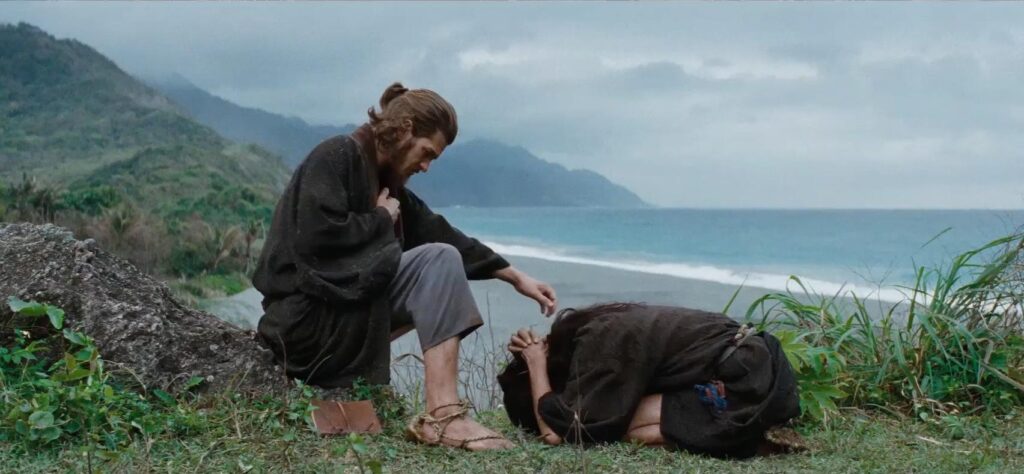Richard Feynman, a renowned physicist, describes the idea of perceiving history or origin as one of many possibilities. This very fact forms the basis of quantum physics. In our everyday experience, we understand reality with different levels of perception. In modern physics, it is necessary to understand reality through model-dependent realism. The same idea can be applied to religion. The system of faith depends largely on perception. In an another view, religion could be best understood with the economics of society. Religion is based on various materialistic aspects such as identity, symbol, and totems. Karl Marx describes religion as “opium for the people”. It spreads like a symptom but is not a disease. Diseases can be cured but symptoms can only be governed or controlled.
Martin Scorsese attempts to describe a story where a catholic priest, Sebastião Rodrigues (played by Andrew Garfield), tries to fight against all odds just to make people understand that Catholicism can flourish in Japan. Sebastião began his voyage to Japan partly to find the whereabouts of Father Cristóvão Ferreira (played by Liam Neeson) and partly to work as a Christian missionary. Upon spending some time in Japan, he realizes that there are some people in Japan who are secretly practicing Catholicism due to the constant fear from a group of Samurais. The sad reality was that the people who follow and practice Christianity were getting killed in the most brutal way possible. Despite knowing this, Sebastião Rodrigues continued in his journey to spread Catholicism and sacrificed more innocent lives. He only met Father Cristóvão Ferreira by the end of the movie. The part that is crucial to the movie is the discussion between Father Cristóvão Ferreira and Sebastião Rodrigues.
Martin Scorsese carefully puts a scene in the movie where both discuss on the repercussions of their unfinished conquest. Sebastião Rodrigues realizes that Father Cristóvão Ferreira had already given up his fight and realized that it is not in his hand to push a narrative. The people of Japan, by large, can only accept the mother nature as their lord (or God). This is true in most eastern civilizations. The problem is that the westeners try to percieve everything through religion and therefore the most unfortunate incident in the history of mankind happend. The Indus Valley civilization that later took shape of Vedic era was posthoumously recategorized as Hinduism in the form of a religion. But if you believe in Karl Marx criticism to religion, you can understand as to why an ancient land like Bharat was captured so easily. They still struggle with Hindu versus Muslim debate.
The title of the movie is justified in a way that one can preach his system of faith in his own silence too especially if you know that spreading it like a virus could only be fatal for the people unless you consider religion to be something else entirely. One can understand the struggles of Catholic priests but that would severly undermine the reality. The absurdity to spread a religion during those times is something debatable at least in the court of law of today’s world but we can’t blame the nincompoops then and there judging from this evolved era. The script is definitely not pleasing for most people as religion has always been a sensitive issue in this world. Therefore, I think Martin Scorsese maintains that respect for Catholicism and tries not to disrespect both western and eastern world. Martin Scorsese has subtly put both sides up and in front of each other. This movie is definitely best in its screenplay, cinematography, acting, and direction.
